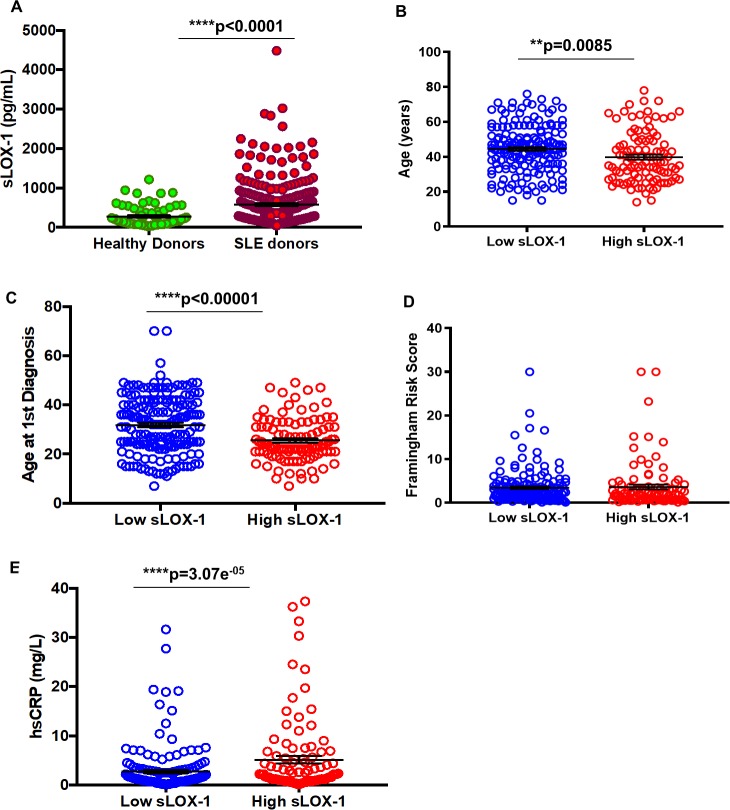Fig 1. Measurement of sLOX-1 levels in healthy versus SLE donors and relationships between sLOX-1 and age, Framingham risk scores (FRS) and hsCRP.
(A) Serum from healthy (n = 72; sLOX-1 pg/mL mean = 274.9 ± 30.34 SEM) and SLE (n = 273; sLOX-1 pg/mL mean = 580.9 ± 36.1) individuals were measured for levels of sLOX-1 using an MSD-based ELISA assay. Bars represent mean ± standard error (SEM). (B) Age of patients with low sLOX-1 levels <532 pg/mL (44.53 ± 1.035 years, n = 171) and high sLOX-1 levels >532 pg/mL (39.82 ± 1.442 years, n = 102) were analyzed. (C) Age of first SLE diagnosis in patients with low sLOX-1 (31.83 ± 0.9143, n = 170) versus high sLOX-1 (25.55 ± 0.8747, n = 103) levels. (D) 10-year FRS were calculated based on patients’ sex, age, systolic blood pressure (SBP), use of antihypertensive treatment, smoking and diabetes, cholesterol and LDL cholesterol levels. (E) Clinical hsCRP (mg/dL) measurements were used to analyze levels between low and high sLOX-1 patients. * p<0.05, ** p<0.01, ***p<0.001 and ****p<0.0001.

